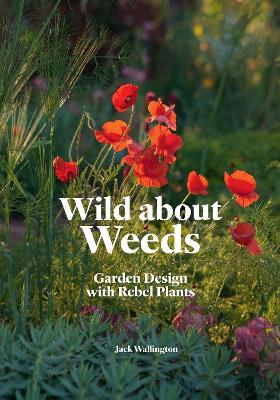Reviewed by annieb123 on
Wild about Weeds: Garden Design with Rebel Plants is a gardening tutorial and design manual for incorporating more spontaneity and unfussy looks into the garden by using some native plants and 'weeds'. Released 22nd Oct 2019 by Laurence King, it's 176 pages and available in hardcover format.
I remember my grandmother (a legendary gardener) telling me at a young age that 'weeds are just plants growing where we don't want them'. That's profound, and anyone who's struggled with beautiful mint or strawberry plants gone wild will understand how they can be as stubborn as the weediest weed.
Lately, all the garden wisdom and advice tells us that we should endeavor to keep at least part of our gardens wild, leave as much deadfall as we can, along with unraked leaves and long grasses to provide food and shelter for overwintering insects and wildlife. This book gives a really refreshing look at more natural garden design philosophy.
The book follows a logical easy to follow format. The introductory sections (~20% of the content) cover the background, some general ideas and definitions (what are weeds, how they can work, and what to absolutely avoid). The following section includes some good discussion on sourcing native plant material (with worryingly little information about doing so ethically), establishing native plants in the garden, and controlling them. The next sections cover specific plants and their situational needs and places where they should thrive.
It includes some lovely photography, both of the plants covered and some garden shots in situ. There are also some FAQs / short interviews with some garden designers and 'weed' specialists at the end of the book which were fun to read. There's an index and glossary and a nice list of other potential weeds to adopt into the garden which didn't make it into the book.
I strongly prefer exuberance and 'cottage-y' gardens, so a lot of the 'weeds' in the book, including Pilosella and Centranthus are already incorporated into my gardens and grow more or less where they will. There are a number of other plants which I fully intend to find space for come spring.
This is a beautifully photographed book and an inspiring read. Four stars.
Disclosure: I received an ARC at no cost from the author/publisher for review purposes.
Reading updates
- Started reading
- Finished reading
- 27 October, 2019: Reviewed
